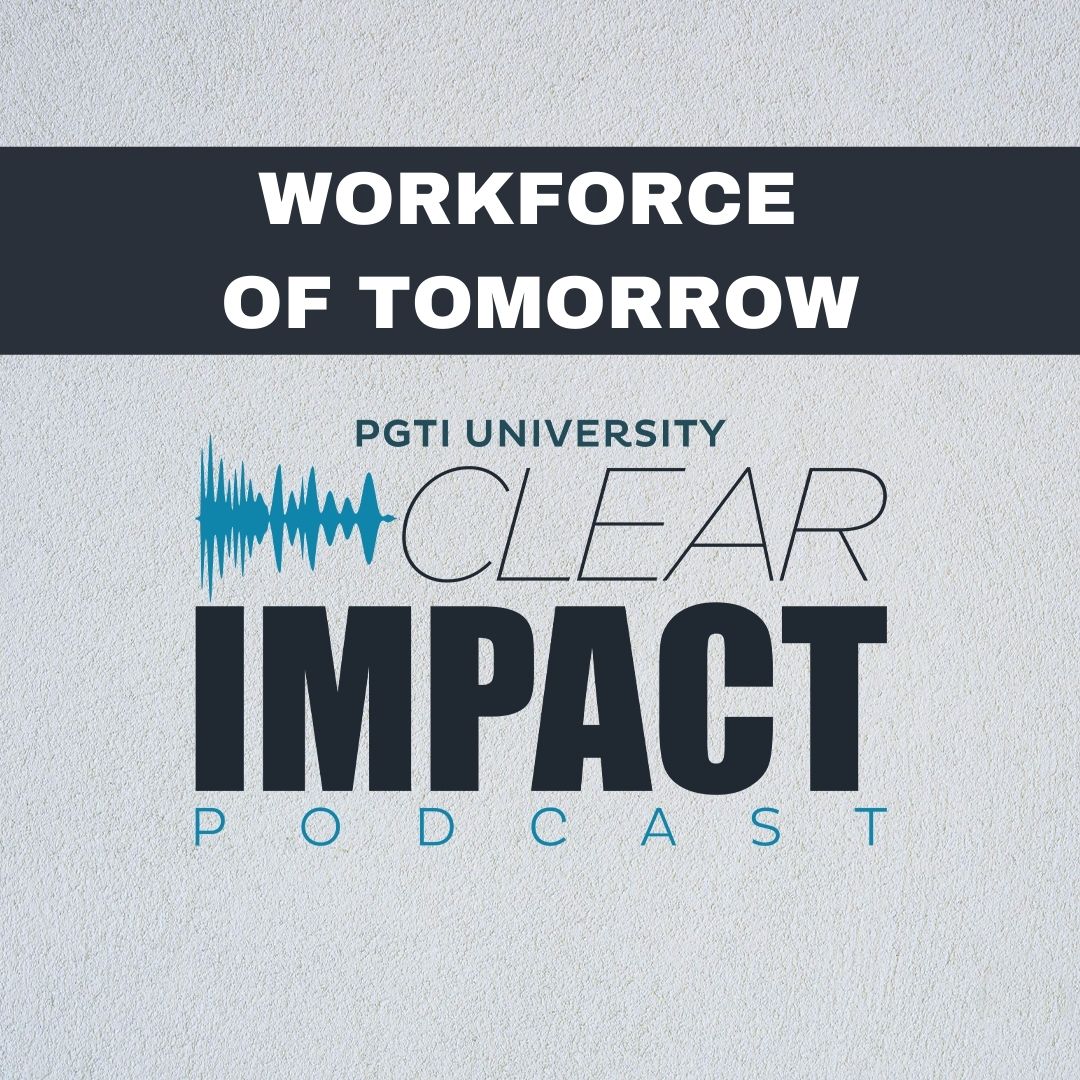Episode Transcript
[00:00:09] Speaker A: Welcome to the Clear Impact Podcast brought to you by PGTI University. Thanks for joining us today. My name is Sherry Connor and I am your host.
Good morning. We are here on the Clear Impact Podcast and we are in a series called windows and doors 301. So we are deep diving on a lot of fun things. I mean, fun for us. Hopefully it's fun for you. But we are going to be talking about water wall testing today. And back in studio with me is Chris Hewitt. Welcome.
[00:00:43] Speaker B: Good morning.
[00:00:44] Speaker A: Yeah, thanks for coming back in. So, Chris, tell us a little bit about your background, your role, your responsibilities, like what do you do here and then we'll jump in.
[00:00:52] Speaker B: Sure, Not a problem. So, Chris Hewitt, I lead the quality organization for what was previously known as pgti, now part of the Mitre Brands Group. And my role is really working with all of our different brands and quality leaders across the organization. I've been fortunate enough to be able to have that role here for two years. Prior to that, I worked in the construction industry for a number of years building, you know, large hospitals and power plants and different things like that across the nation. Definitely was exposed to the fenestration industry while I was in that role. And prior to that, most of my career spent in the manufacturing space working for some heavy machinery manufacturers and powertrain manufacturers, things of that nature. So definitely not new to the manufacturing game. And yeah, great to be here.
[00:01:36] Speaker A: Yeah, thanks for coming in. And so one of the favorite things that I like to point out, I mean, there's so many great things about taking customers on a tour, especially here at PGT on the mezzanine. But I do talk about the water wall and that we do have testing there to make sure that the quality is what it needs to be and that if there is an issue, we catch it before it goes out. And so I would like to just kind of do a de dive on that. I know you can explain it more than I can.
[00:02:03] Speaker B: Yeah. So our ALMA labeling, for instance, so our AAMA labeling, which is American Architectural Manufacturers association, not to throw too many acronyms at you. So our ALMA labeling requires us actually to do a minimal amount of finished product testing. There are some requirements if we want to use our AMA labeling, which is all of our products typically across the brands, will go out with that ALMA labeling. We do have a minimum amount of testing. However, that said, we far exceed both the what's defined as that testing and then the inner volts for that testing on a daily basis across all of our different manufacturing plants across the organization. So that Water wall testing frequency can vary by brand and by product type, and then also by risk as well. Based on what we've seen in the past and our different operations, whether they're a vinyl window or an aluminum window or door, for instance.
[00:02:56] Speaker A: Okay. So we're required to do some testing, but not nearly as much as we actually do.
[00:03:01] Speaker B: Yeah. Like I said, we far exceed the minimum requirements of what that testing. And then I would say the scrutiny and the level of testing that takes place is pretty different from the minimum requirement. So again, there's that minimum requirement and then there's what we actually do, which is certainly above that requirement.
[00:03:17] Speaker A: And so outside of the AMA requirement, why would we go above and beyond?
[00:03:22] Speaker B: So water infiltration obviously is a big risk, a big impact for our customer. Should a window unit leak due to the manufacturing aspect, the installation comes into play as well. Right. But from the actual product itself, we want to make sure that we're delivering a product to our dealer, our customers. Customer, our installer, that's going to make sure that any water infiltration that happens is shed out to atmosphere. Right. So some of our products, for instance, like a horizontal roller is designed that water will. There's a track that water comes down to the track. We want to make sure it weaves out. Any of our mechanical joints are sealed up. But at the end of the day, it's kind of basic.
[00:03:54] Speaker A: Right.
[00:03:54] Speaker B: We want to make sure that our windows don't leak into a wall cavity.
[00:03:57] Speaker A: Yeah. Because water is going to create a lot of damage.
[00:04:00] Speaker B: Absolutely.
[00:04:00] Speaker A: And it always finds the path of least resistance, which is going to go down. So if you're on a third floor, that can be really damaging.
[00:04:07] Speaker B: Your downstairs neighbor's not going to be very happy with you and your brand new windows and doors.
[00:04:11] Speaker A: Yeah, no, for sure. Yeah. I'm on the second floor and I'm getting new windows and doors pretty soon. But I've got the right crew coming in, so I feel confident that they're going to nail it. And so what are some of the details around the water wall testing?
[00:04:23] Speaker B: Sure. So the water wall testing that we do in house, first of all, there's two different types. There's what we do in house on our finished products, and then we actually have a team that supports field water testing as well for certain projects and slight processes, requirements, pressures, flows, that sort of thing. But the concept is the same. So if you look at what we do internally, we have envisioned kind of a large, freestanding kind of frame structure. Right. Could be wood, could be steel, could be Aluminum. And we actually take a product right off of our line, unwrap that product, same as a customer would receive them, and we install them onto this water wall. So we put them in a constrained state, the same way that they would be in a typical installation. And then on the back side of that, we actually pull a vacuum. We're creating a negative space, a negative pressure behind it. And then on the front of that window we'll actually have spray nozzles. So if you can imagine like a sprinkler or a shower or something like that, we're applying water to simulate rainwater on the front of the window and then actually pulling a vacuum from the backside. So we're putting it kind of in that worst possible condition. And then we seal up around the edge of the window with whether it be foam or rubber or some type of sealant material. So we make sure we can maintain that vacuum. And then we run for a series of time at a certain amount of pressure and a certain amount of flow, depending on the product and the type of testing we're doing. And then what we're looking for on the backside of that we have clear plexiglass. Typically we're looking for any signs of water coming through that window that exceed our tolerances. So in the right condition, in severe wind driven rain with negative pressure, you're going to see some amount of water, typically in some small areas. But there are very clear criteria around what we would expect to see in those extreme conditions. So if we identify that the product is great, passes testing, everything's good, then we go on and we continue our sampling. If we identify a concern, that then drives us to look into our process. Hey, what have we got going on there? Is there a problem with sealant or a gasket or the assembly technique, that sort of thing? And we do that on a regular enough basis to make sure that our products that are going out, out the door and out to our customers, we're sampling those at those regular intervals on every single shift. So we make sure that if we do have a problem, we can identify that well before it would get out into the field and cause a problem with the customer.
[00:06:33] Speaker A: And we have date and time stamps on all of the products.
[00:06:37] Speaker B: Yeah, so one of the things, and this is kind of back to that require again. ALMA requires us to show that we're doing that testing. And so we have records of this is what units we tested, this is when we tested them. And again, we exceed what those frequency requirements are. But yeah, we record all those Testing results and the frequency from every shift.
[00:06:57] Speaker A: And then I think one of the things that Jeff Brown shared with me is that we test in proportion to what we build.
[00:07:04] Speaker B: Yeah. So there are different testing protocols. So if we've got products that are going on to some of our, what we consider large projects or commercial type products, the testing frequency for those are a little bit different. Multi floor projects versus, you know, a single floor home, you know, typical residential home in Florida or the Sunbelt, we would test those at a higher frequency, typically, and make sure that these products that will then be retested again in the field. Usually we try to engage our field water testing team to kind of a belt and suspenders approach to make sure that those products are going to perform as expected.
[00:07:35] Speaker A: Yeah, we're actually going to do an episode in this series with William Knight and Lynn Miller to talk about what that looks like.
[00:07:42] Speaker B: Yep. Will's the guy.
[00:07:43] Speaker A: Yeah, he's been tough to, to pin down. He's been busy.
[00:07:46] Speaker B: We're trying to recruit him for a session in Texas here in October as well. So he's in high demand. Yeah.
[00:07:51] Speaker A: Well, I'm thrilled he's able to come in next week. And so how does all of this help our customers?
[00:07:58] Speaker B: So at the end of the day, it ensures that we're delivering a consistent product for our customer that's going to meet their expectations. Right. Meet or exceed those expectations. So it helps us stay proactive versus reactive. So it helps us ensure that what's going out the door is what we intend versus waiting for a customer to call back and say, hey, we've got issues with such and such. Right. We've got a leak or we've got this or that, and then kind of drives us to figure out, you know, root cause on that. This helps us stay well ahead of that and address any issues within our four walls versus waiting till something gets outside of our four walls.
[00:08:28] Speaker A: Sure. No, we don't want to cross our fingers. Just hope everything's good. Right?
[00:08:32] Speaker B: Exactly.
[00:08:33] Speaker A: Nice. Is there anything else?
[00:08:34] Speaker B: No, I think that pretty much covers it. I mean, it's a basic process, but it's very critical, to say the least, to make sure that our products are meeting our standards of performance for sure and the expectations that we have out in the field.
[00:08:45] Speaker A: Awesome. Well, I really appreciate your time today, Chris. Thank you so much for sharing all of this with us and we'll talk again soon.
[00:08:51] Speaker B: Thanks.
[00:08:51] Speaker A: All right, take care.
The Clear Impact podcast is brought to you by PGTI University. We are a part of Mitre Brands, a family of leading window and door brands united by our passion for quality and relentless pursuit of 100%. One of the missions of Mitre Brands is to unite and deliver the finest customer experience possible across the nation. Our window and door brands deliver regionalized expertise and products. Backed by a national company, PGTI University is here to educate you, our listener, so that you can be a more informed consumer of window indoor products.


